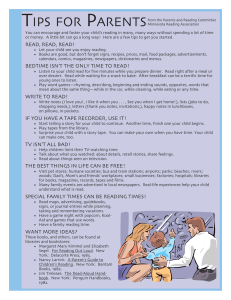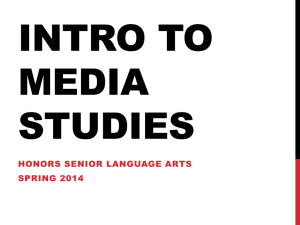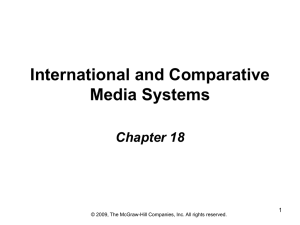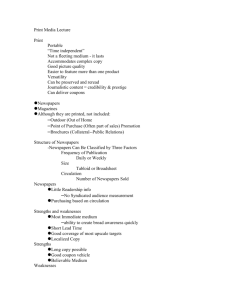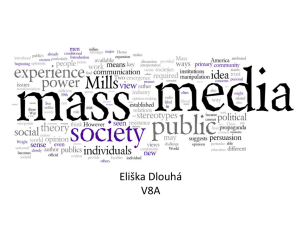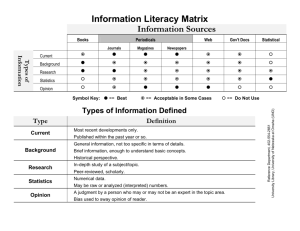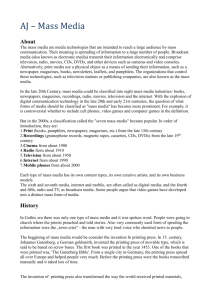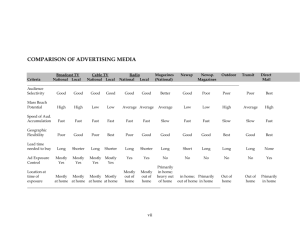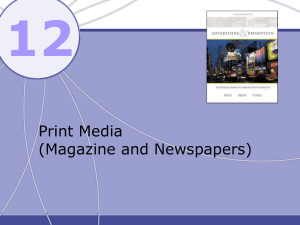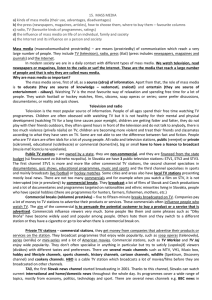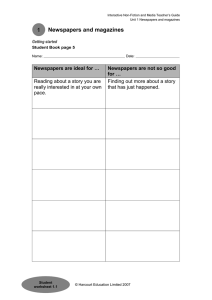Reading is in present a favourite leisure time activity
advertisement
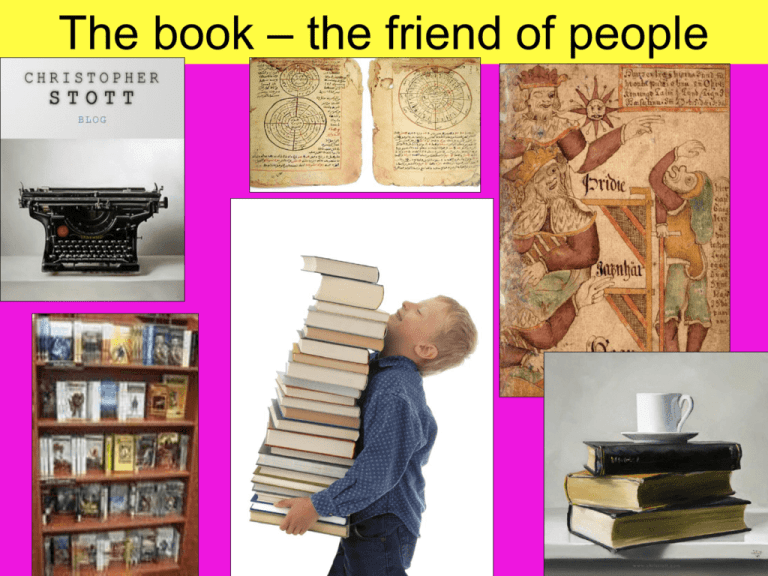
The book – the friend of people Reading is in present a favourite leisure time activity • Reading is closely connected with literacy and education. From the very beginning people wanted to be informed as well as they wanted to keep knowledge for other generations. • Firstly, they used hard materials like stone tables, later they started to use silk, leaves or papyrus. As the paper was invented, people start to write longer texts and created the first books called manuscripts – the hand written books. They used ink and goose feather for writing. Why do people read? • • • • For pleasure and entertainment Education and learning To get information Advice Popularity of reading • In the past reading used to be more popular, nowadays it is still a popular activity among a group of people, but majority of people prefer reading newspapers or magazines to reading books • Reading books is on decline from many reasons: - books are rather expensive - reading books is time consuming - many books/novels have been filmed so people rather watch films than read books - in particular young people don´t like reading books, it´s boring, they fancy doing other activities Literature • Can be divided into 2 categories: non-fiction and fiction literature. • Non-fiction books are read for information.There are: Textbooks – educational books Encyclopaedias – large books or set of books with facts about different subjects Dictionaries – books that tell us the meaning of words by translating or explaining them Biographies, autobiographies, memoirs – tell us about the life of famous personalities Self help books – give us advice in various fields (e.g. medicine or DIY=do it yourself books) Travel/history/art books – provide information about travelling / history / the arts Cookery books – contain recipes for cooking • Fiction books are about imaginary people, places and events. We can speak about 2 main types: poetry and prose. • Poetry is written by poets who create poems or lyrics. • Prose is written by authors/writers who can write various types of genres. Readers can choose from tales, short stories, novellas, romances, novels, spy/detective stories, mysteries, science-fiction, westerns, thrillers, adventurous or historical novels. Short stories and novellas are shorter then novels, there are fewer characters and the plot is simpler. Novels can be larger – set of two or more books. A story in a book can be set in an imaginary or real place and time with imaginary or real characters. The plot is narrated by an author or one of the characters or the main heroes. Talented writers are excellent story tellers and they are able to keep the reader in attention from the beginning to the end. Usually the reader reads such books in one sitting. Advantages of reading • Reading books can have a positive effect on us: - we can acquire new knowledge, information from books - improve our imagination - get better our communication skills, widen our vocabulary - books make us think about different topics - books amuse us Where to get books? • Books are available in bookshops (you can buy them) or in libraries (you can borrow them). Some libraries are free of charge, but most of them charge a small fee for yearly membership or for each borrowed book. If you want to be a member of some library, you must have a library card, pay some fee and return the books on time otherwise you should pay a fine. Reading newspapers • At present more people prefer reading newspapers or magazines to reading books • Why? It is not as time consuming as reading books, articles in newspapers are shoter than stories in books • THE PRESS – newspapers and magazines – they have a great influence on public opinion and they also influence the political life and political views. Newspapers can be divided into: • National – Pravda, SME…/ and regional /local/ - Liptov, Ružomberský hlas • broadsheets or serious/ and tabloids or popular • Newspapers are published every day, some of them are published even at weekends, magazines are published once a week or a month • Broadsheets are printed on large pages and are serious in tone => they bring information that is serious and objective => for example national and political news, financial and economical news, sports news, the weather forecast, crosswords, advertisements and so on. They are usually published daily, and so we call them dailies. • The tabloids – popular have a smaller size and bring less serious news => they bring entertaining articles => they often discuss the personal lives of famous people – gossip from the famous’ people lives, disasters, murders • Magazines are usually published weekly, have more pages than newspapers and are in colour. We know women`s and men`s magazines containing stories, articles on fashion, make-up, food and fitness, cars, music, sport and so on - Children`s magazines publish short fairy tales, short poems, simple crosswords and so on. • Journals – serious magazines – they publish articles written by experts – e.g. doctors, scientists, teachers etc. L.N.Tolstoy Virginia Woolf Mark Twain Norman Mailer Mario Puzo Victor Hugo Oscar Wild
